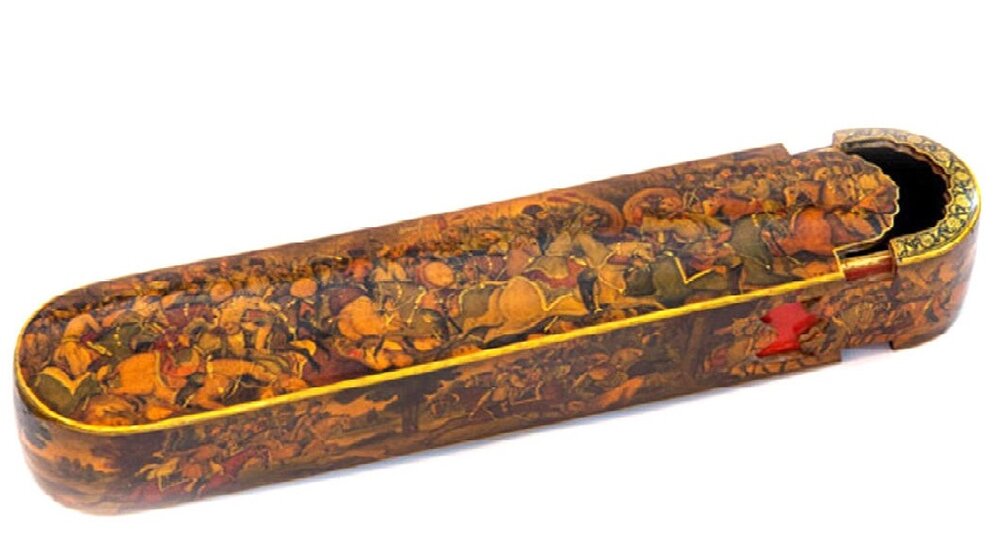Iranian handicrafts: papier-mache and lacquer work

TEHRAN - In Iran lacquer works first became popular under the name of papier-mache, and were introduced in the Safavid era.
The art further flourished during Zand and Qajar eras. In the beginning, it was related to the craft of making “Ghalamdaan” or pen holder cases, but it was gradually incorporated in applicable objects such as doors and wooden boxes, too, according to Visit Iran.
Papier-mache is a French word, with the word papier meaning paper and mache, to crumple. One reason for lacquer work to be called papier-mache is the usage of paper waste in making the objects. In the art encyclopedia, the word papier-mache has been defined as “crumbled paper” and it usually refers to paper objects that are painted or covered by lacquer on the surface.
With little difference, this craft was also common in traditional handicrafts of other regions such as China, India, etc. In Iran, Zir Laaki painting became common, especially in painting pen holder cases. Most probably, before the Islamic era lacquer was used to protect wooden products, and since many artistic wooden objects of the Sassanid dynasty have been destroyed, no knowledge of usage of lacquer or decoration of these objects is available. Painters mostly applied the design of “Gol o Morgh” (flowers and birds) on the pen holder cases to meet the demands of the buyers and embellished them with floral, calligraphy, and gold inlays. Ali Ashraf and Agha Ali are two of the masters of this craft.
To make papier-mache, paper waste, water and glue are mixed to make a paste, and then turn it into small objects like pen holder cases, book covers, mirror cases, and other objects. After it is dried, it is painted and polished with lacquer or oil (a mixture of linseed, Tetraclinis, and polish oil). This leads the Zir Laaki painting to achieve an effect similar to oil painting. Isfahan is the center of making papier-mache.
AFM

Leave a Comment